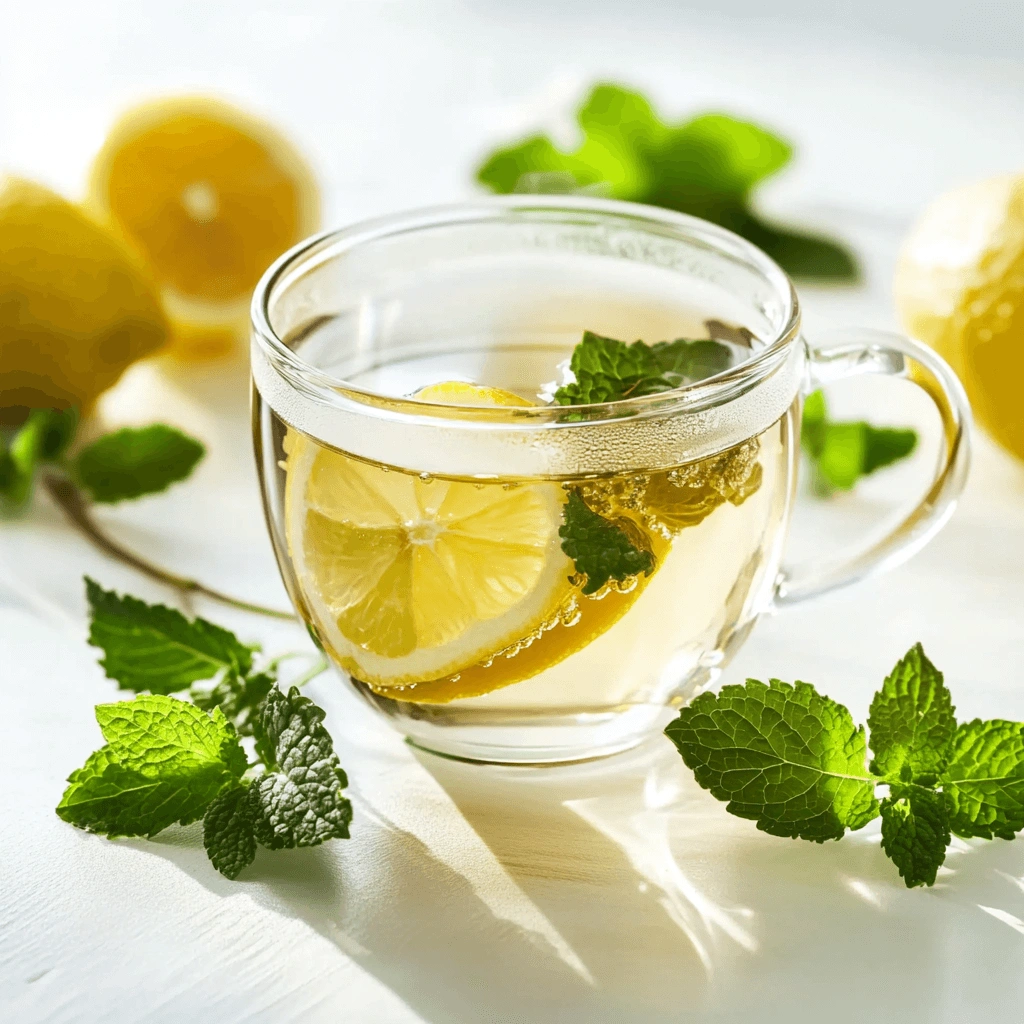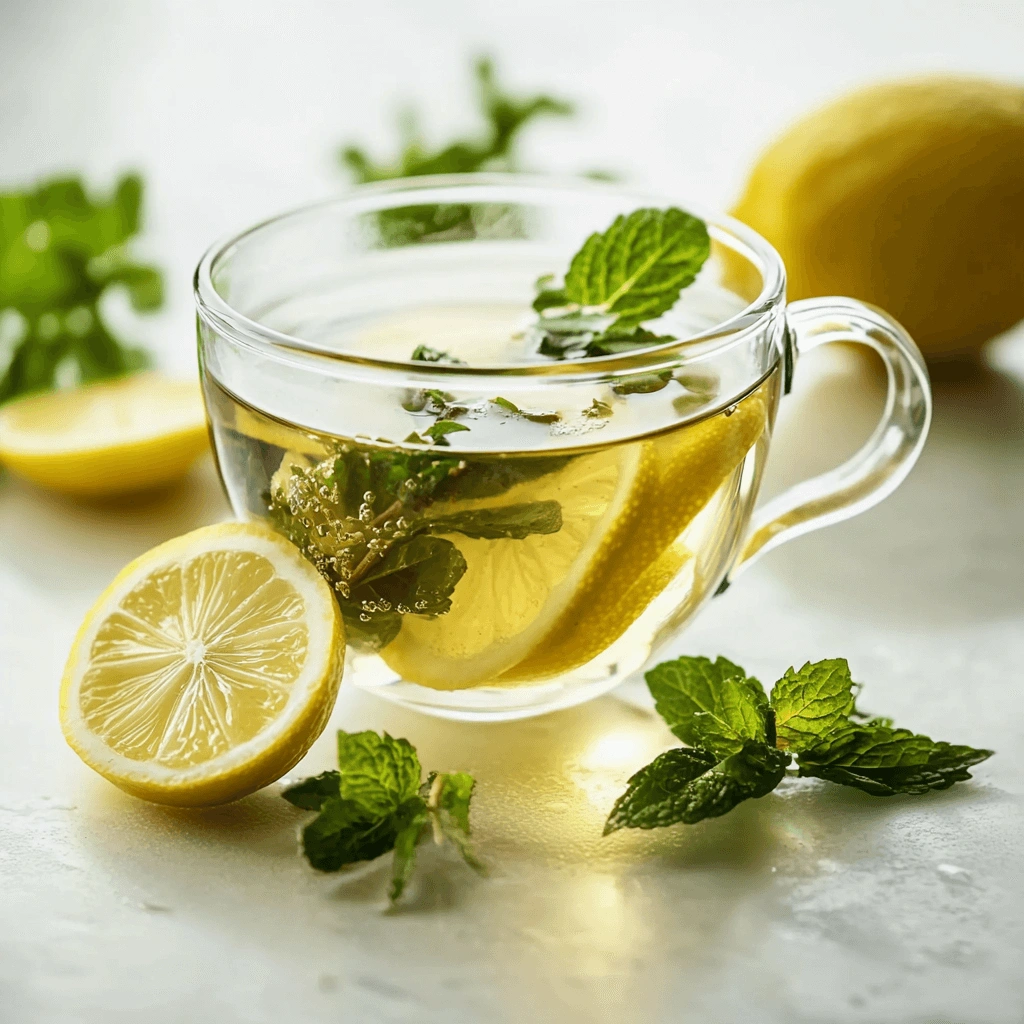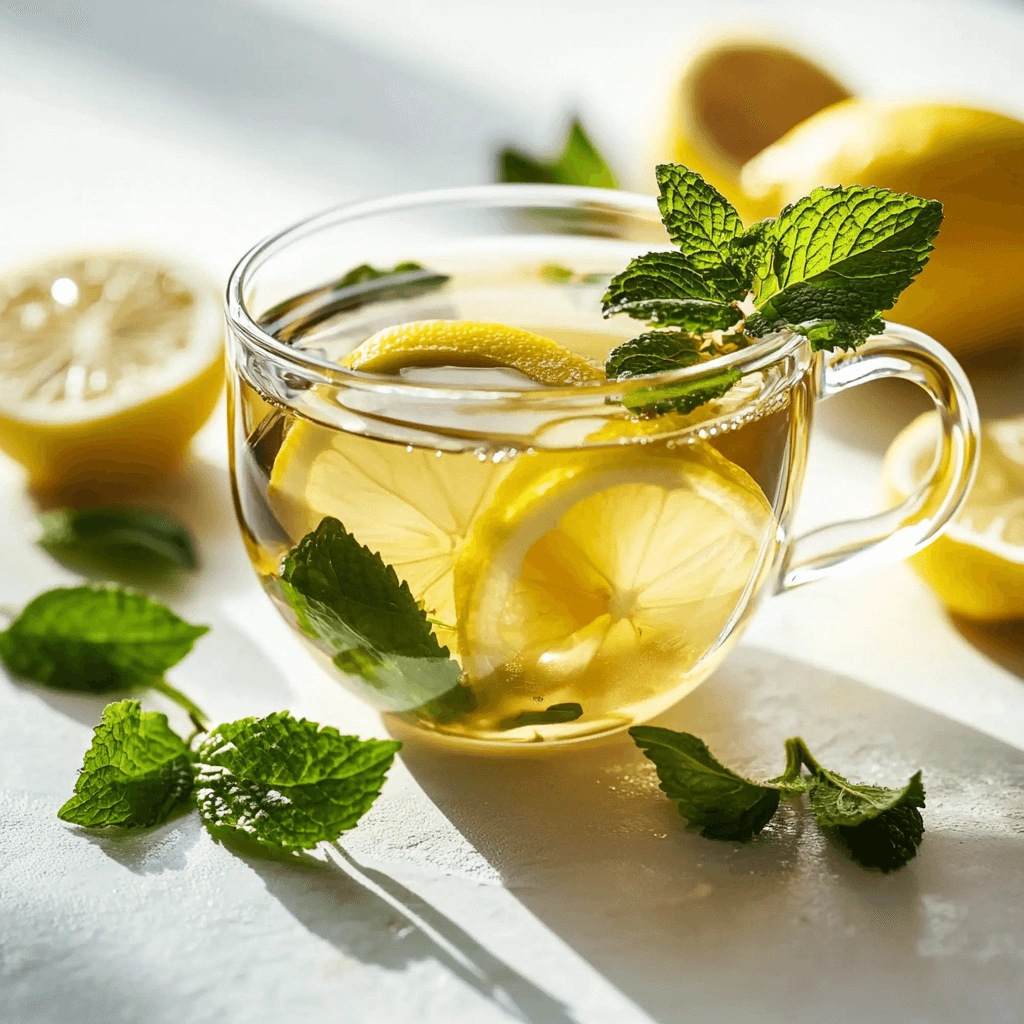Introduction: Why You Need to Try a Lemon Balm Recipe
A lemon balm recipe is a fantastic way to bring bright, citrusy flavors and natural health benefits into your daily routine. Whether you use it in tea, sauces, desserts, or herbal remedies, lemon balm offers a refreshing, slightly minty taste that complements a variety of dishes.
What is Lemon Balm, and Why Is It So Popular?
Lemon balm (Melissa officinalis) is a fragrant herb known for its mild lemon aroma and soothing effects. A well-crafted lemon balm recipe can be used in:
Teas and infusions – A calming, aromatic beverage.
Salads and dressings – Adds a unique, citrusy touch.
Desserts and syrups – Infuses sweetness with herbal depth.
Many people seek out a lemon balm recipe for its culinary versatility and medicinal benefits.
The Unique Citrus-Mint Flavor Profile
A lemon balm recipe has a subtle balance of zesty citrus and mild minty freshness, making it ideal for:
Refreshing summer drinks, including lemon balm-infused lemonade.
Herbal teas and tinctures for relaxation and stress relief.
Savory sauces and marinades to complement fish, chicken, and vegetables.
Pro Tip: To maximize the flavor of any lemon balm recipe, crush the leaves slightly before adding them to dishes or drinks.
How Lemon Balm is Used in Culinary and Herbal Traditions
The lemon balm recipe has been treasured in culinary and medicinal practices for centuries.
Ancient Greeks and Romans infused it into drinks and healing salves.
European herbalists used lemon balm in calming teas and remedies.
Modern chefs now create lemon balm recipes for unique desserts and cocktails.
For another herbal-inspired dish, check out this homemade Mounjaro weight-loss drink recipe.
Health Benefits of Lemon Balm in Cooking
A well-prepared lemon balm recipe does more than just taste good—it provides natural health benefits, making it a staple in herbal medicine and culinary wellness.

Stress-Relieving and Calming Effects
Naturally reduces anxiety – A key reason why many people enjoy a lemon balm recipe.
Aids sleep – Often used in bedtime teas to support relaxation.
Helps balance stress hormones – Making it a great daily herbal remedy.
How to Use: Brew a lemon balm recipe for tea to promote relaxation and restful sleep.
Digestive and Immune System Support
A lemon balm recipe can also support gut health and boost immunity.
Eases indigestion and bloating – Often included in herbal digestive blends.
Contains antibacterial properties – Helps with oral health and immune support.
Soothes nausea and cramps – A great natural alternative to over-the-counter remedies.
Pro Tip: Add fresh lemon balm leaves to a light salad or herbal tea after meals for better digestion.
Antioxidant and Antibacterial Properties
High in polyphenols – Supports cellular health and reduces inflammation.
Contains rosmarinic acid – A powerful antioxidant for immune defense.
Natural antibacterial effects – Common in oral health products and skin treatments.
How to Use: Make a lemon balm recipe for homemade herbal syrups, tinctures, or infused oils.
For more health-focused recipes, check out this gluten-free couscous recipe.
How to Harvest and Store Lemon Balm for Recipes
To get the best results from any lemon balm recipe, you need to harvest and store it correctly.

Growing and Harvesting Fresh Lemon Balm
Lemon balm is an easy-to-grow perennial herb, making it a perfect addition to home gardens.
Prefers full sun or partial shade for optimal growth.
Harvest leaves before flowering to retain the best flavor and aroma.
Cut fresh stems in the morning, when essential oils are at their peak.
Pro Tip: Regular pruning encourages healthy growth and prevents the plant from becoming too woody.
Proper Drying and Storage Techniques
To preserve lemon balm’s fresh aroma, follow these drying and storage methods.
How to Dry Lemon Balm for Recipes
Rinse leaves gently and pat dry completely.
Tie stems into small bunches and hang in a dark, ventilated space.
Once crisp, store in airtight jars away from sunlight.
Pro Tip: Use dried lemon balm within six months for maximum potency.
Best Ways to Preserve Lemon Balm’s Aroma and Flavor
Freeze fresh leaves – Place in ice cube trays with water or olive oil.
Make lemon balm syrup – Ideal for cocktails, teas, and desserts.
Infuse into tinctures or oils – Extends shelf life for herbal remedies.
For more preservation techniques, check out this pickled sausage shelf-life guide.
Classic Lemon Balm Recipe: Soothing Herbal Tea
One of the easiest and most beneficial ways to enjoy lemon balm is in a simple herbal tea recipe.
Step-by-Step Guide to Making Fresh Lemon Balm Tea
Gather ¼ cup of fresh lemon balm leaves.
Bring 2 cups of water to a boil, then remove from heat.
Add lemon balm leaves and let steep for 5-10 minutes.
Strain and serve warm or over ice.
Pro Tip: A longer steeping time enhances the herbal and citrus notes.
Variations with Honey, Ginger, or Chamomile
Honey – Adds natural sweetness and throat-soothing benefits.
Ginger – Boosts digestion and enhances immune support.
Chamomile – Increases the calming effects of relaxation.
Pro Tip: Brew a large batch of lemon balm tea and store it in the fridge for a refreshing iced version.
Benefits of Drinking Lemon Balm Tea Regularly
Reduces stress and anxiety naturally.
Aids digestion and supports gut health.
Strengthens immunity with antioxidants.
For even more herbal tea inspiration, explore AllRecipes for additional blends.
Refreshing Lemon Balm Recipe: Homemade Lemonade
Nothing beats a glass of homemade lemonade, especially when infused with fresh lemon balm leaves. This lemon balm recipe is a simple yet flavorful way to stay hydrated, enjoy the soothing benefits of lemon balm, and enhance the taste of a classic summer drink.
How to Make a Lemon Balm-Infused Lemonade
This lemon balm recipe blends the natural citrusy-mint essence of the herb with fresh lemons and honey for a revitalizing drink.
Ingredients:
½ cup fresh lemon balm leaves (loosely packed)
4 cups water
½ cup freshly squeezed lemon juice
¼ cup honey or maple syrup (adjust to taste)
Ice cubes for serving
Instructions:
Bring 2 cups of water to a boil, then take it off the heat.
Add lemon balm leaves and let them steep for 10 minutes.
Strain the infused water into a pitcher.
Mix the lemon juice and honey thoroughly until fully blended.
Add the remaining 2 cups of cold water and mix well.
Serve over ice and garnish with fresh lemon slices or extra lemon balm leaves.
Pro Tip: For an extra twist, add fresh berries or a splash of sparkling water for a fizzy variation.
For another refreshing homemade drink, check out this homemade Mounjaro weight-loss drink recipe.
Savory Lemon Balm Recipe: Herb-Infused Pesto
A lemon balm recipe isn’t just for drinks—this herb-infused pesto offers a delicious savory twist that can be used in pasta, sandwiches, and grilled vegetables.
Ingredients and Preparation for a Lemon Balm Pesto
This pesto recipe swaps basil for lemon balm, creating a bright, herby, and slightly tangy sauce.
Ingredients:
1 cup fresh lemon balm leaves
½ cup fresh parsley or basil
¼ cup toasted walnuts or pine nuts
½ cup grated Parmesan cheese
2 cloves garlic, minced
½ cup olive oil
Juice of ½ lemon
Salt and pepper to taste
Instructions:
In a food processor, combine lemon balm leaves, parsley, nuts, Parmesan, and garlic.
Pulse until coarsely chopped.
Slowly drizzle in olive oil while blending until smooth.
Add lemon juice, salt, and pepper to taste.
Keep in a sealed jar and refrigerate for up to five days.
Pro Tip: For a nut-free version, substitute sunflower seeds or omit nuts entirely.
How to Use Lemon Balm Pesto on Pasta, Sandwiches, and Grilled Vegetables
Mix with pasta for a simple and tasty dish.
Spread it on sandwiches or wraps for a herby kick.
Drizzle over grilled vegetables to enhance their flavor.
For another savory idea, check out this pepper steak recipe guide.
Storage and Freezing Tips for Long-Lasting Freshness
Keep in a sealed jar and refrigerate for up to five days.
Freeze in ice cube trays for easy portioning—just pop out a cube when needed!
Pro Tip: Cover the pesto with a thin layer of olive oil before refrigerating to prevent browning.
Baking with Lemon Balm: Muffins, Cakes, and Cookies
Adding lemon balm to baked goods is a fantastic way to introduce a subtle, citrusy herbal flavor to muffins, cakes, and cookies.
How to Incorporate Lemon Balm into Baked Goods
A finely chopped handful of lemon balm leaves can:
Enhance the flavor of cakes, muffins, and shortbread cookies.
Pair beautifully with honey, vanilla, and citrus zest.
Infuse sugar for a lightly flavored sweetener.
Best Flavor Pairings (Honey, Vanilla, and Citrus)
Lemon balm has a delicate citrus-mint profile that complements:
Honey – Adds natural sweetness and depth of flavor.
Vanilla – Balances the herbal notes for a smooth, comforting taste.
Citrus zest (lemon or orange) – Enhances the zesty undertones of lemon balm.
Pro Tip: Add 1–2 tablespoons of finely chopped lemon balm to your favorite sugar cookie or pound cake recipe.
Making a Lemon Balm Sugar Infusion for Desserts
A simple lemon balm sugar is an easy way to infuse herbal flavors into baked goods.
How to Make Lemon Balm Sugar
Chop ½ cup fresh lemon balm leaves.
Mix with 1 cup granulated sugar.
Let sit in an airtight container for 24 hours before using.
Use this fragrant sugar in cookies, cakes, or even sprinkled on fresh fruit!
For more baking ideas, check out this chokecherry pudding recipe.
Creative Lemon Balm Recipe: Flavored Honey & Syrup
How to Make Lemon Balm-Infused Honey
This lemon balm recipe creates a naturally infused honey perfect for tea, toast, or desserts.
Ingredients:
1 cup honey
½ cup fresh lemon balm leaves
Instructions:
Gently heat honey in a saucepan on low heat.
Add lemon balm leaves and let them steep for 30 minutes.
Strain and store in a glass jar.
Pro Tip: This infused honey makes a great homemade gift!
Uses for Lemon Balm Syrup in Cocktails and Desserts
A homemade lemon balm syrup is perfect for sweetening drinks, drizzling over desserts, or adding to cocktails.
How to Make Lemon Balm Syrup
Boil 1 cup water and 1 cup sugar.
Add ½ cup fresh lemon balm leaves and simmer for 5 minutes.
Strain and store in a bottle.
Use in cocktails like mojitos or lemonade.
Drizzle over pancakes or ice cream for a herbal twist.
Cool & Creamy Lemon Balm Recipe: Ice Cream & Sorbet
A lemon balm recipe for ice cream or sorbet is the perfect summer treat. The bright citrusy notes of lemon balm blend beautifully with the richness of cream in ice cream or the light, refreshing texture of sorbet.
Making a Lemon Balm-Infused Ice Cream Base
A homemade lemon balm ice cream is both smooth and aromatic, offering a delicate, refreshing herbal twist.
Ingredients:
1 cup fresh lemon balm leaves
2 cups heavy cream
1 cup whole milk
¾ cup sugar
4 egg yolks
1 teaspoon vanilla extract
Instructions:
Gently heat the milk and cream in a saucepan over moderate heat.
Add lemon balm leaves, stirring occasionally, then remove from heat.
Let it steep for 15 minutes, then strain the mixture.
In a separate bowl, whisk egg yolks and sugar until creamy.
Slowly add the warmed milk mixture to the eggs, whisking constantly.
Return to the heat, stirring until it thickens into a custard.
Chill in the refrigerator for at least 4 hours, then churn in an ice cream maker.
Pro Tip: Add a splash of lemon juice before churning for extra brightness.
Dairy-Free Sorbet Options with Lemon and Honey
If you’re looking for a dairy-free option, try this lemon balm sorbet.
Ingredients:
2 cups fresh lemon balm leaves
2 cups water
½ cup honey
½ cup lemon juice
Instructions:
Simmer water, honey, and lemon balm for 10 minutes.
Remove from heat and let it steep for 15 minutes.
Strain and mix in lemon juice.
Pour into a freezer-safe container and stir occasionally until it solidifies.
Pro Tip: For a smoother texture, blend the mixture before freezing.
For another refreshing treat, check out this chokecherry pudding recipe.
Savory Dishes with Lemon Balm: Soups, Salads, and Marinades
A lemon balm recipe doesn’t have to be sweet—it also makes an excellent addition to savory dishes like vinaigrettes, soups, and grilled meats.
Using Lemon Balm in Vinaigrettes and Dressings
Lemon balm makes a fantastic herbal vinaigrette for salads, roasted vegetables, and grain bowls.
Lemon Balm Vinaigrette Recipe
½ cup fresh lemon balm leaves, chopped
⅓ cup olive oil
2 tablespoons lemon juice
1 tablespoon honey or maple syrup
1 teaspoon Dijon mustard
Salt and pepper to taste
Instructions:
Whisk all ingredients together until well blended.
Store in the fridge for up to one week.
Pro Tip: Drizzle over grilled fish for a light, herbal-infused finish.
Adding It to Soups, Fish, and Roasted Vegetables
Lemon balm pairs well with vegetable-based soups, seafood, and roasted vegetables.
Soups: Add chopped lemon balm to a vegetable or chicken broth before serving.
Grilled Fish: Use a lemon balm marinade to infuse freshness into salmon, cod, or tilapia.
Roasted Vegetables: Toss with olive oil, garlic, and lemon balm for an herbal-roasted flavor.
For another savory dish, explore this pepper steak recipe guide.
The Best Seasoning Combinations for Balance
Lemon balm + garlic + lemon zest – Perfect for grilled meats and seafood.
Lemon balm + honey + ginger – Ideal for stir-fries and marinades.
Lemon balm + thyme + basil – Great for roasted vegetables and soups.
Pro Tip: Add lemon balm at the end of cooking to preserve its delicate flavor.
Frequently Asked Questions About Lemon Balm Recipes
Can Lemon Balm Be Used Instead of Mint or Basil?
Yes! Lemon balm has a mild citrus-mint flavor, making it a great substitute for:
Mint in teas, cocktails, and desserts.
Basil in pestos, vinaigrettes, and savory dishes.
What’s the Best Way to Store Fresh Lemon Balm?
Refrigeration: Store fresh leaves in a damp paper towel inside a sealed container.
Freezing: Blend with olive oil and freeze in ice cube trays.
Drying: Hang in small bunches in a cool, dry place, then store in an airtight container.
How Do You Prevent the Herb from Losing Its Potency in Recipes?
Use fresh leaves whenever possible.
Add at the end of cooking to prevent heat from breaking down the oils.
Store dried lemon balm properly in an airtight jar away from light.
For more herbal preservation tips, check out this pickled sausage shelf-life guide.
Conclusion: Try a Lemon Balm Recipe and Enjoy Its Versatility
A lemon balm recipe is one of the most versatile ways to bring fresh, citrusy flavor into your kitchen. Whether you’re making tea, lemonade, sorbet, soups, or sauces, this herb can enhance both sweet and savory dishes effortlessly.
The Versatility of Lemon Balm in Sweet and Savory Dishes
Sweet recipes: Perfect for teas, lemonades, syrups, and baked goods.
Savory dishes: Ideal for vinaigrettes, marinades, and soups.
Refreshing drinks: Use in cocktails, iced teas, or detox waters.
Encouraging Readers to Experiment with Herbal Infusions
The best part about using lemon balm in cooking is its ability to pair well with so many flavors. Whether you’re a beginner or an experienced home cook, there’s always a new lemon balm recipe to try!
Pro Tip: Start by making a simple lemon balm tea, then experiment with pestos, sorbets, or infused syrups.
Share Your Favorite Lemon Balm Recipe!
Have you tried making a lemon balm recipe? Let us know your favorite ways to use this herb in the comments!
For even more herbal recipes and inspiration, check out AllRecipes for additional ideas.

